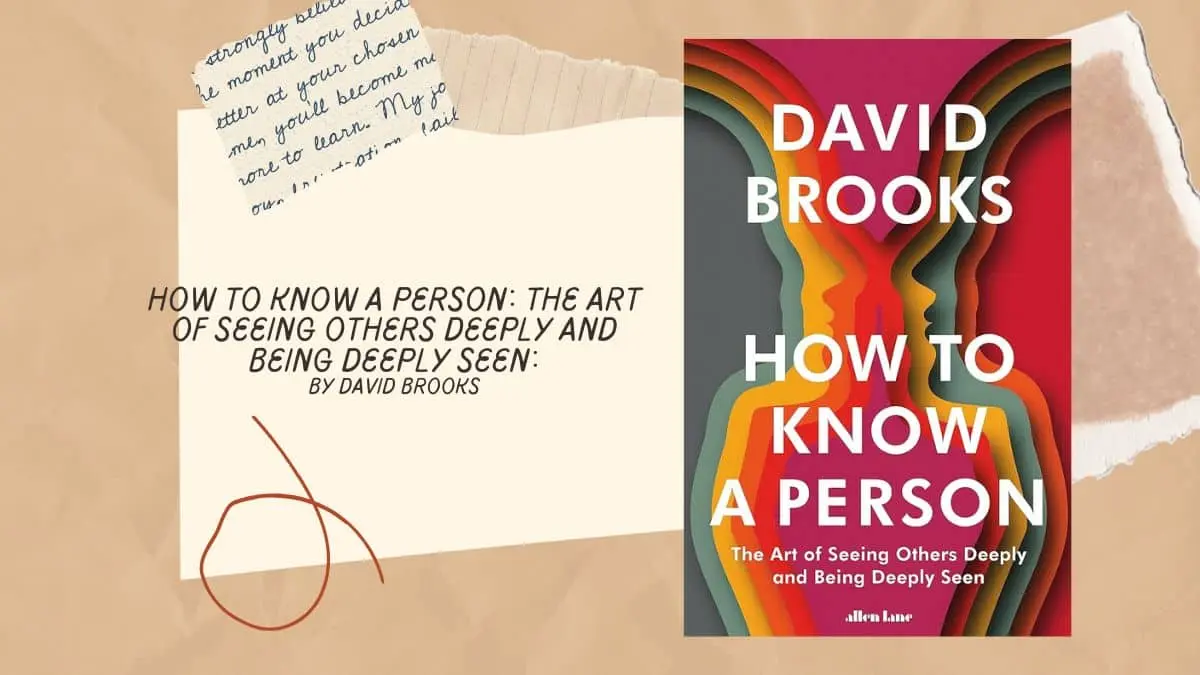David Brooks’ How to Know a Person: The Art of Seeing Others Deeply and Being Deeply Seen is a reflective and engaging guide on mastering the art of understanding others on a profound level. Brooks, known for his thoughtful explorations into character and society, offers a refreshing perspective on human interaction that goes beyond the surface. His focus on empathy, connection, and the challenges of truly seeing and being seen resonates deeply with readers seeking more meaningful relationships.
The Journey from Emotional Detachment to Connection
One of the most compelling aspects of Brooks’ narrative is his personal evolution. In the book, Brooks openly admits his earlier struggles with emotional detachment and how, over time, he learned the value of connecting with others. This vulnerability gives readers a relatable lens through which to view their own struggles with interpersonal relationships. The journey is filled with candid anecdotes, demonstrating that even those who are not naturally adept at forming deep connections can improve through practice and intention.

Illuminators and Diminishers: Understanding Human Interaction
Central to the book is Brooks’ concept of “Illuminators” and “Diminishers.” Illuminators are individuals who enrich and brighten the lives of those around them through active listening and empathy, while Diminishers do the opposite, unintentionally or otherwise reducing the depth of their interactions. Brooks emphasizes the importance of becoming an Illuminator, as this role can foster a sense of community and trust. He also delves into how attention and presence can shape relationships, providing a roadmap for how to be present in a world full of distractions.
The Power of Shared Experiences and Meaningful Conversations
Brooks highlights that meaningful connections often arise from shared experiences and conversations that go beyond the superficial. He explains that good conversations are less about talking and more about listening, which allows us to ask better questions and understand others on a deeper level. By sharing real-life examples, Brooks illustrates how empathy and understanding can transform relationships, making them more fulfilling.
The Epidemic of Disconnection
The book takes a broader societal view, touching on what Brooks calls the “epidemic of disconnection.” In today’s world, where loneliness and isolation seem to be on the rise, Brooks believes that the root cause is our inability to truly see and understand each other. This disconnection leads to a breakdown in empathy, which, in turn, breeds meanness and distrust. The author calls for a return to seeing others not just as people we interact with but as individuals with unique experiences, emotions, and stories.
Character Development Through Relationships
A notable theme in the book is the idea that character is developed not in isolation but through relationships with others. Brooks challenges traditional notions of character building, arguing that it’s through our interactions—particularly those that require deep understanding and empathy—that we grow. The author skillfully interweaves personal narratives with broader societal reflections, making a case for why relationships are central to our personal development.
Criticisms: Personality Traits and Over-Simplification
While Brooks’ insights are valuable, some critics point out that his treatment of the Big Five personality traits oversimplifies the nuances of human behavior. For example, Brooks seems to suggest that extroversion and neuroticism are mutually exclusive, which contradicts established psychological research that shows they can coexist independently. This has led some readers to question the accuracy of certain parts of his psychological analysis.
Conclusion: A Guide for a More Connected Life
Despite its minor shortcomings, How to Know a Person is a powerful call to action in a world where true human connection is becoming increasingly rare. Brooks provides a practical and heartfelt approach to seeing others deeply, reminding us of the profound impact empathy can have on both personal fulfillment and societal harmony. Whether you’re looking to improve your relationships at home, work, or in your community, Brooks’ book offers actionable insights to foster deeper, more meaningful connections.
Also Read: Pucking Sweet: By Emily Rath (Book Review)





